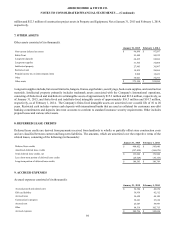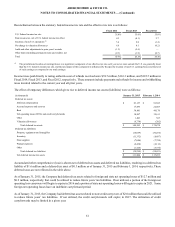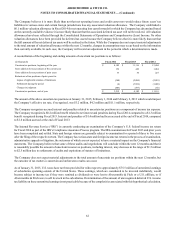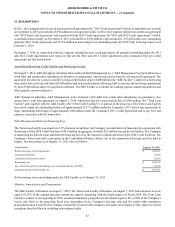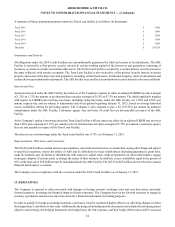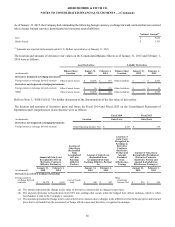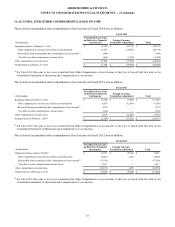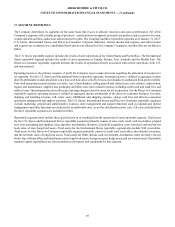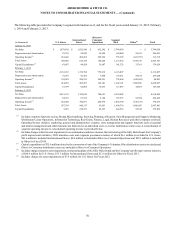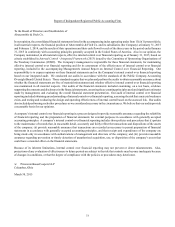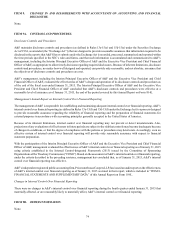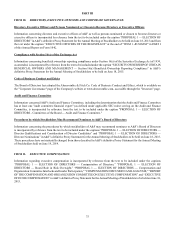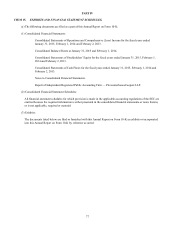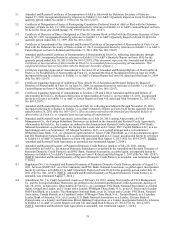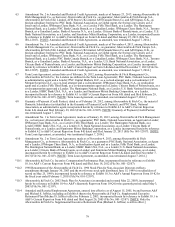Abercrombie & Fitch 2014 Annual Report Download - page 69
Download and view the complete annual report
Please find page 69 of the 2014 Abercrombie & Fitch annual report below. You can navigate through the pages in the report by either clicking on the pages listed below, or by using the keyword search tool below to find specific information within the annual report.ABERCROMBIE & FITCH CO.
NOTES TO CONSOLIDATED FINANCIAL STATEMENTS — (Continued)
69
17. SEGMENT REPORTING
The Company determines its segments on the same basis that it uses to allocate resources and assess performance. All of the
Company’s segments sell a similar group of products—casual sportswear apparel, personal care products and accessories for men,
women and kids and bras, underwear and sleepwear for girls. The Company had three reportable segments as of January 31, 2015:
U.S. Stores, International Stores, and Direct-to-Consumer. Corporate functions, interest income and expense, and other income
and expense are evaluated on a consolidated basis and are not allocated to the Company’s segments, and therefore are included in
Other.
The U.S. Stores reportable segment includes the results of store operations in the United States and Puerto Rico. The International
Stores reportable segment includes the results of store operations in Canada, Europe, Asia, Australia and the Middle East. The
Direct-to-Consumer reportable segment includes the results of operations directly associated with on-line operations, both U.S.
and international.
Operating income is the primary measure of profit the Company uses to make decisions regarding the allocation of resources to
its segments. For the U.S. Stores and International Stores reportable segments, operating income is defined as aggregate income
directly attributable to individual stores on a four-wall basis plus sell-off of excess merchandise to authorized third-party resellers.
Four-wall operating income includes: net sales, cost of merchandise, selling payroll and related costs, rent, utilities, depreciation,
repairs and maintenance, supplies and packaging and other store sales-related expenses including credit card and bank fees and
indirect taxes. Operating income also reflects pre-opening charges related to stores not yet in operation. For the Direct-to-Consumer
reportable segment, operating income is defined as aggregate income attributable to the direct-to-consumer business: net sales,
shipping and handling revenue, call center costs, fulfillment and shipping expense, charge card fees and direct-to-consumer
operations management and support expenses. The U.S. Stores, International Stores and Direct-to-Consumer reportable segments
exclude marketing, general and administrative expense, store management and support functions such as regional and district
management and other functions not dedicated to an individual store, as well as distribution center costs. All costs excluded from
the three reportable segments are included in Other.
Reportable segment assets include those used directly in or resulting from the operations of each reportable segment. Total assets
for the U.S. Stores and International Stores reportable segments primarily consist of store cash, credit card receivables, prepaid
rent, store packaging and supplies, lease deposits, merchandise inventory, leasehold acquisition costs, restricted cash and the net
book value of store long-lived assets. Total assets for the International Stores reportable segment also include VAT receivables.
Total assets for the Direct-to-Consumer reportable segment primarily consist of credit card receivables, merchandise inventory,
and the net book value of long-lived assets. Total assets for Other include cash, investments, distribution center inventory, the net
book value of home office and distribution center long-lived assets, foreign currency hedge assets and tax-related assets. Reportable
segment capital expenditures are direct purchases of property and equipment for that segment.


